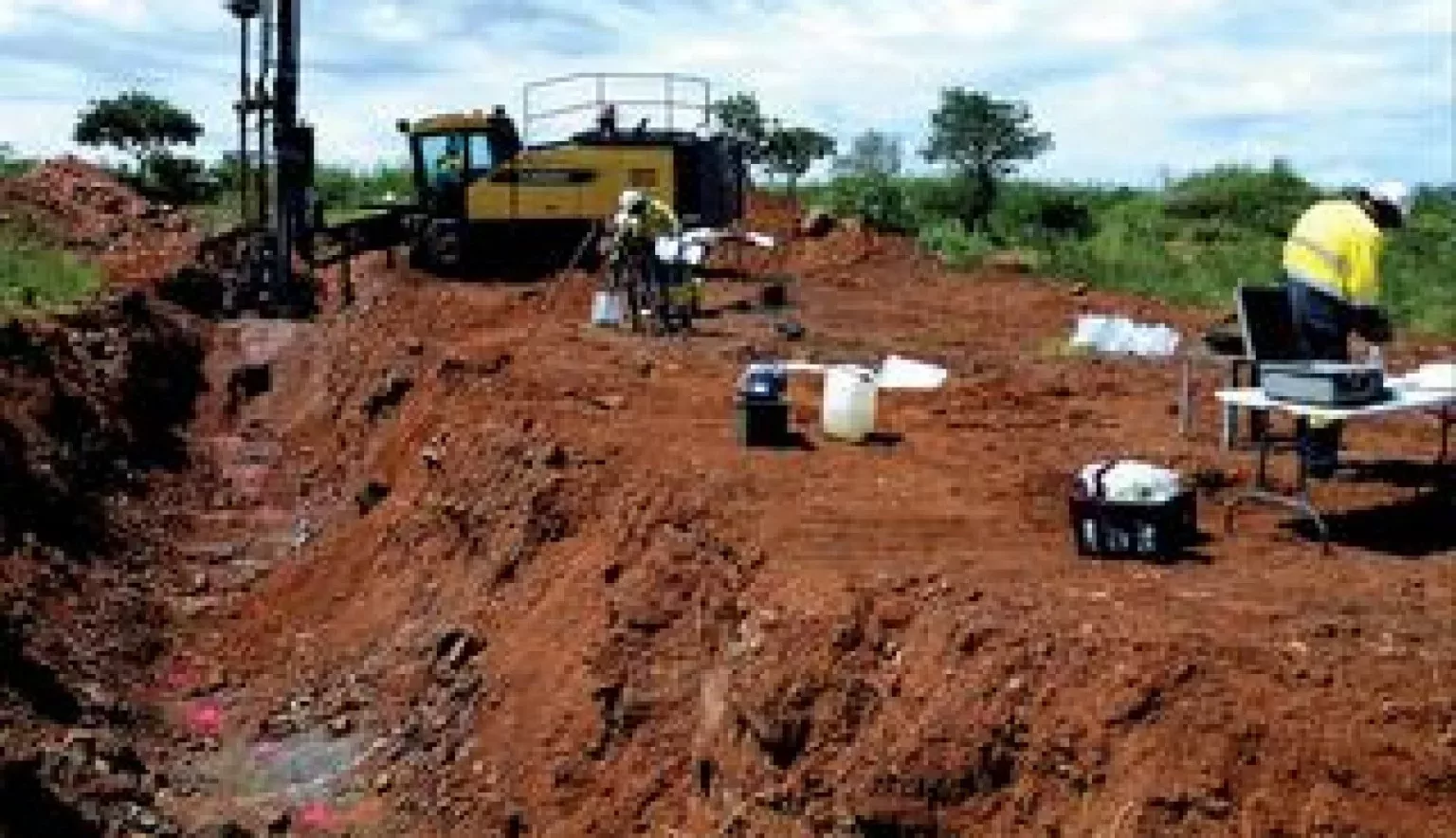Shaw River Ltd. have recently pushed forward with their flagship Otjozondu project in Namibia, where excellent logistics means a competitive investment environment.
MANAGING MANGANESE MINING
Shaw River Manganese Limited is an Australian based mineral exploration and development company focussing on manganese project opportunities internationally. Its flagship project is located in Namibia, in the south west of Africa. With a current focus on exploration, defining and increasing their mineral resource base and project studies, the company have recently developed an open-cut mining operation at its Otjozondu (Otjo) Project in Namibia.
From its appearance on the stock exchange in late 2006, initially with all assets held in Western Australia, Shaw River now have a shareholder relationship with Atlas Iron, who have a 53.45 per cent interest share in Shaw River Manganese Limited. Peter Benjamin, Managing Director of Shaw River, talked to Africa Outlook about their flagship “Otjozondu Project” and his understanding of the mining and manganese industry.
WHY AFRICA?
With a complex Government approvals process in Australia, projects can be expensive and take years to complete. Benjamin says that investment is only coming into the industry for very large projects: “Those with an excellent return on investment and a good margin, often in excess of 100 per cent, are the projects that attract attention and investment in the current investment environment.”
There are sometimes very good resource investment opportunities in Africa because of a combination of Greenfields (new), better availability of capital, lower labour and operating costs and relatively quick timetables for the approval process. “However, in some parts of Africa, often they don’t have sufficient infrastructure in place to support resource operations, especially for bulk minerals such as coal, iron ore and of course, manganese,” explains Benjamin.
However, in regards to our Otjozondu Project, Namibia is an exception to this rule. Whilst the country has a relatively small population of around 2.2 million people it has very good logistics in place as a consequence of the British and German construction history. They have a very good rail and road system and most importantly a transparent and fair rule of law as Benjamin remarks: “It is one of the best countries in Africa to do business; they have a good mining law system [similar to Australia] which makes it quite attractive and secure for tenements and projects.” Another of the great things about doing business in Namibia is that that they currently enjoy a competitive labour environment compared to other parts of the world, in particular Australia. For example, a project of the same size and quality in Australia can be built for significantly less in Southern Africa, as Benjamin emphasises: “You can get terrific savings in capital costs as well as reasonable operating costs, compared with a similar sized project in other parts of the world.” In addition, there can be considerable time savings for obtaining the necessary resource approvals in Southern Africa for Resource projects.
A LOGISTICAL ADVANTAGE
More than 90 per cent of Shaw River’s effort and expenditure has been invested into their flagship manganese project, the Otjozondu (Otjo) Project, in Namibia. Otjo lies to the North East of the capital Windhoek and the company is determined to take the project into production. The site was originally mined in World War One by the Germans, where it’s been reported that they produced more than half a million tonnes of manganese at 44 per cent manganese grade. Boasting a fruitful offering, Benjamin is confident that Otjo will be a competitive investment: “We are fortunate in that Otjo is only 550 kilometres from the coast, with a good road system in place, and the site is 146 kilometres away from the nearest rail network. This means the material can be transported to the coast by either rail or by road to the container or bulk facilities port at Walvis Bay.” Shaw River are in an excellent position with Otjo, because many other South African manganese mines are considerably further away from the nearest ports, meaning Otjo is very competitive from a logistical perspective. “Around 65 per cent of our cost base is in logistics, therefore in order to be competitive, the logistics base has to be good,” Benjamin added.
A CYCLICAL INDUSTRY
The mining industry always has been and always will be a cyclical industry. With prices for most commodities being low at the moment, Benjamin revealed it is a challenging environment to be working in. This being said, the Otjo project seeks to buck this trend: “The manganese market is really driven by steel production, 10 per cent of the manganese produced in the world, approximately 20.3 million tonnes goes into manufacturing manganese metal but almost 90 per cent goes into making manganese alloy for steel making. The Otjo project will produce a silico-manganese product, which is used to make long steel for construction, which is ideal for developing nations, such as China.” The demand for manganese is strongest in China, with the country importing more than 50 per cent of its manganese, Benjamin recognises there is huge possibility for their client base.
THE OTJOZONDU PROJECT
During 2013 Shaw River has continued to build confidence in key parameters of the Otjo Project including those deposits with higher grades and metallurgical response. Typically, the next step would be further investigation of project parameters such as manganese grade, geological continuity and metallurgical yield within a Pre-Feasibility Study (PFS). Shaw River has been reviewing operational plans that aim to improve their understanding of key operational assumptions whilst advancing the Otjo Project in the most cost effective manner. Considering the time and cost taken to complete a PFS, and the reasons overleaf, Shaw River has decided to obtain this information by commencing Blast Hole surface drilling in an area, targeting the basis of a start-up inventory. This initial area forms a subset of broader, staged plan to subsequently mine and process.
This approach is considered appropriate because:
- Otjo manganese mineralisation occurs at surface or under shallow (The areas initially chosen, contain Mineral Resources delineated during the 12,060 metre resource drilling program completed in December, 2012 and reported according to JORC, 2004.
- Extensive rock chip sampling results indicates that material of suitable manganese grade (>25% Mn) “occurs at surface”, with the potential to be mined in future, subject to drilling results.
- There is existing infrastructure and owned equipment such as a terrex crusher, screens, conveyors, a fi nes JIG, including an electricity allocation, water, workforce, and mining lease, with all approvals in place.
- Considerations for future mining could be via shallow open pit and the manganese processed using existing well established technology, such as, a JIG plant.
- Two companies are operating nearby and producing manganese product using similar operational practices, one for 10+ years and who is producing >120-140Kt pa of manganese product from the same geological Otjo manganese field, albeit from small, unconnected mine leases representing about 10 percent of the area of the Otjo field.
Shaw River Managing Director Peter Benjamin said that “the Shaw River decision to expedite the company’s transition from explorer to project developer was a very encouraging development.”
LOCAL SUPPLIERS
In both Africa and Australia, attracting and obtaining high quality personnel and meeting their salary expectations can be a challenge. “There is a reasonable amount of concern in Australia in regards to employment. There are quite a few mining projects that are being put on hold or shelved indefinitely, so it is challenging to attract the investment for resource projects, and in turn, securing the right personnel to do the job,” Benjamin states.
Benjamin has a strong preference to use local suppliers where that service exists in Namibia. “I have sourced great people, and they provide great service and are cost-competitive. Every developing nation wants to provide jobs for its nation in order to become more developed. I have two native Namibian geologists in my team; they are both excellent and they have a good technical knowledge.”
In addition to sourcing a local team, Shaw River is preparing a CSR Programme (Community Social Responsibility) to help improve aspects of the local communities.
SECRET TO SUCCESS
The secret to success for Shaw River comes from a true understanding what opportunities there are for manganese and developing a strategy around those opportunities; clearly scoping out exactly what you need to do in terms of cost, time and any future gain. “You must develop a plan. Unless you have a great team of people who want to work together, coordinate and communicate towards a common goal, and are experts in their field of endeavours, then you can do almost anything. In the minerals industry, the best resource is the people, and with good people you can achieve anything.”
































